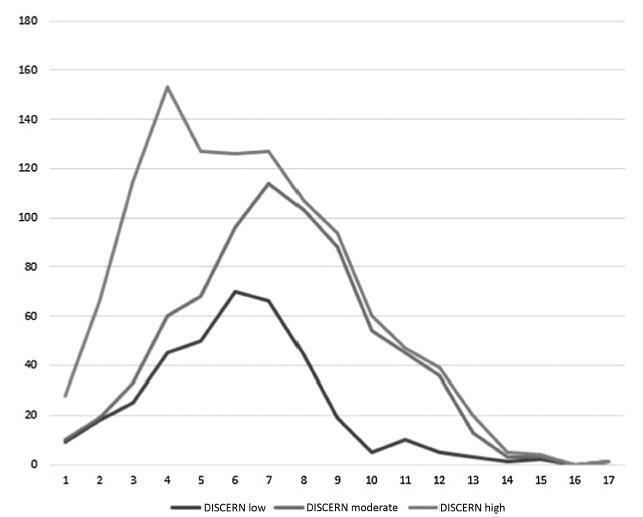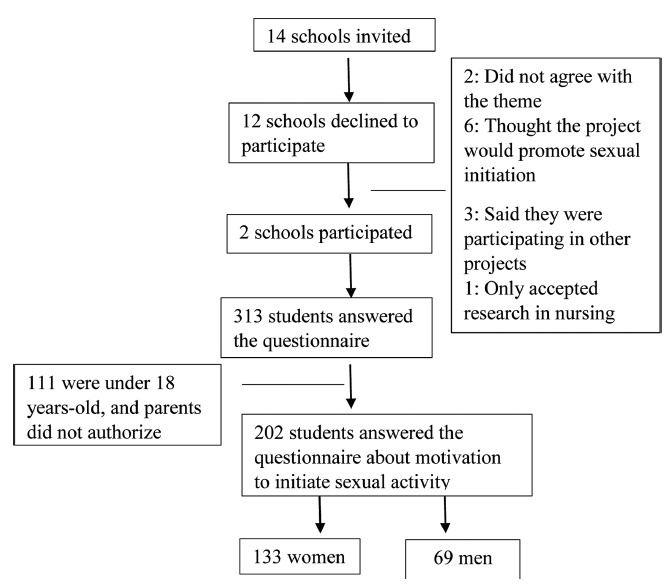You searched for:"Luiz Gustavo Oliveira Brito"
We found (26) results for your search.Summary
Rev Bras Ginecol Obstet. 2019;41(8):508-519
We sought to investigate whether women present adequate knowledge of the main pelvic floor disorders (PFDs) (urinary incontinence - UI, fecal incontinence - FI, and pelvic organ prolapse - POP).
sources A systematic review was performed in the MEDLINE, PEDro, CENTRAL, and Cochrane databases for publications from inception to April 2018. Selection of studies A total of 3,125 studies were reviewed. Meta-analysis was not possible due to the heterogeneity of primary outcomes and the diversity of instruments for measuring knowledge. The quality of the articles included in the analysis was evaluated with the Newcastle-Ottawa Scale (NOS) adapted for cross-sectional studies.
Two authors performed data extraction into a standardized spreadsheet.
Nineteen studies were included, comprising 11,512 women. About the methodological quality (NOS), most of the studies (n= 11) presented a total score of 6 out of 10. Validated questionnaires and designed pilot-tested forms were the most frequently used ways of assessing knowledge. Some studies were stratified by race, age, or group minorities. The most used questionnaire was the prolapse and incontinence knowledge questionnaire (PIKQ) (n= 5). Knowledge and/or awareness regarding PFD was low to moderate among the studies. Urinary incontinence was the most prevalent PFD investigated, and the most important risk factors associated with the lack of knowledge of the pelvic floor were: African-American ethnicity (n= 3), low educational level (n= 4), low access to information (n= 5) and socioeconomic status (n= 3).
Most women have a gap in the knowledge of pelvic floor muscle dysfunctions, do not understand their treatment options, and are not able to identify risk factors for these disorders.

Summary
Rev Bras Ginecol Obstet. 2016;38(11):529-530
Summary
Rev Bras Ginecol Obstet. 2018;40(9):547-553
There are no published studies analyzing the quality of the information for lay women on the Internet regarding uterine fibroids. The accuracy of the provided material is also unknown. Thus, we have performed a cross-sectional study with 381 websites in the English and Brazilian Portuguese languages between May and December 2017.
Two investigators performed the analysis, and the Cohen kappa coefficient was calculated to analyze the agreement between them. Search terms (uterine fibroids and derivatives) in the English and Brazilian Portuguese languages were used. The accuracywas analyzed by a 10-itemchecklist created based on the American Society for Reproductive Medicine (ASRM), National Institutes of Health (NIH) and European Menopause and Andropause Society (EMAS) consensuses about uterine fibroids. The item-test correlation and the intraclass coefficient were performed in the 16 questions from the DISCERN instrument, which was designed to measure the quality of health information on the Internet. Analysis of variance (ANOVA) measurements were performed for the independent variables and the DISCERN/accuracy scores.
Google was the most used search engine, and uterine fibroid was the search term that generatedmost of the analyzed material. The median score for accuracy in all websites was 5 out of 10, and the median score of the DISCERN instrument was 38 out of 80. The top-scoring sites in the English language were derived from scientific organizations and federal governments, and they regarded the DISCERN score (The American College of Obstetricians and Gynecologists [ACOG], the Food and Drug Administration [FDA]) and the accuracy criteria (NIH, and FDA). On the other hand, in the Brazilian Portuguese language, the highest scores in both instruments were from magazines or physician’s blogs. The Cronbach α test showed a higher correlation (0.77-0.79) between the sites and DISCERN; however, the item-test correlation varied from 0.39 to 0.56.
There is a need to improve the quality of the information regarding uterine fibroids for lay women.

Summary
Rev Bras Ginecol Obstet. 2019;41(9):564-574
To assess the efficacy of non-surgical treatment for adenomyosis.
A search was performed by two authors in the Pubmed, Scopus, and Scielo databases and in the grey literature from inception to March 2018, with no language restriction.
We have included prospective randomized studies for treating symptomaticwomen with adenomyosis (abnormal uterine bleeding and/or pelvic pain) diagnosed by ultrasound or magnetic resonance imaging.
Studies were primarily selected by title and abstract. The articles that were eligible for inclusion were evaluated in their entirety, and their data was extracted for further processing and analysis.
From567retrieved records only 5 remained for analysis. The intervention groups were: levonorgestrel intrauterine system (LNG-IUS)(n= 2), dienogest (n= 2), and letrozole (n= 1). Levonorgestrel intrauterine system was effective to control bleeding when compared to hysterectomy or combined oral contraceptives (COCs). One study assessed chronic pelvic pain and reported that LNG-IUS was superior to COC to reduce symptoms. Regarding dienogest, it was efficient to reduce pelvic pain when compared to placebo or goserelin, but less effective to control bleeding than gonadotropin-releasing hormone (GnRH) analog. Letrozolewas as efficient asGnRHanalog to relieve dysmenorrhea and dyspareunia, but not for chronic pelvic pain. Reduction of uterine volumewas seen with aromatase inhibitors, GnRH analog, and LGN-IUD.
Levonorgestrel intrauterine system and dienogest have significantly improved the control of bleeding and pelvic pain, respectively, in women with adenomyosis. However, there is insufficient data from the retrieved studies to endorse eachmedication for this disease. Further randomized control tests (RCTs) are needed to address pharmacological treatment of adenomyosis.

Summary
Rev Bras Ginecol Obstet. 2021;43(1):66-71
Uterine leiomyoma is themost prevalent benign type of gynecological tumor. It affects more than 80% of women worldwide and, within this group, more than 50% may be asymptomatic. However, large fibroid volumes may be associated with symptoms of extrinsic compression, and most of the cases do not present atypical cells. We present the case of a 49-year-old woman who underwent a total abdominal hysterectomy of a 13.5-kg uterine leiomyoma with no malignancies at histopathology and review the literature about giant uterine leiomyomas and their clinical repercussion. We concluded that large volumes do not always pose a threat regarding malignancy; however, future molecular studies are needed to investigate giant uterine fibroids.

Summary
Rev Bras Ginecol Obstet. 2020;42(11):731-738
Adolescence is characterized by significant biological and psychological changes. During this time, the increased production of androgens leads to increased sexual behavior, and this may contribute to early initiation of sexual activity. The objectives of the present cross-sectional study of adolescents enrolled in state schools in the city of Ribeirão Preto, state of São Paulo, Brazil, were to determine the average age at the first sexual intercourse (sexarche), the average number of sexual partners, and the frequency of contraceptive and condom use. Information on the age at sexarche, number of sexual partners, use of different contraceptive methods, and use of condoms were obtained using a semistructured questionnaire. Quantitative variables are expressed as means and standard deviations (SDs), and qualitative variables as absolute and relative frequencies. The chi-squared test was used for comparisons of qualitative variables, and the Student t-test for comparisons of continuous variables. All statistical analyses were performed using SAS (version 9.4, North Carolina State University, USA). We evaluated 202 students who answered the questionnaire, 69 males (36.36%) and 133 females (63.64%). The age at sexarche for men ranged from 7 to 18 years old, and for women from 7 to 17 years old. Forty-eight girls (36.01%) and 21 boys (30.43%) were in the first year of high school, 66.94% of adolescents reported sexual intercourse, and 56.25% used a condom during the first sexual intercourse. A total of 36.72% of students said they had safe sex most of the time, and 83.59% said that the first sexual intercourse happened because they “had a crush on” the other person.
